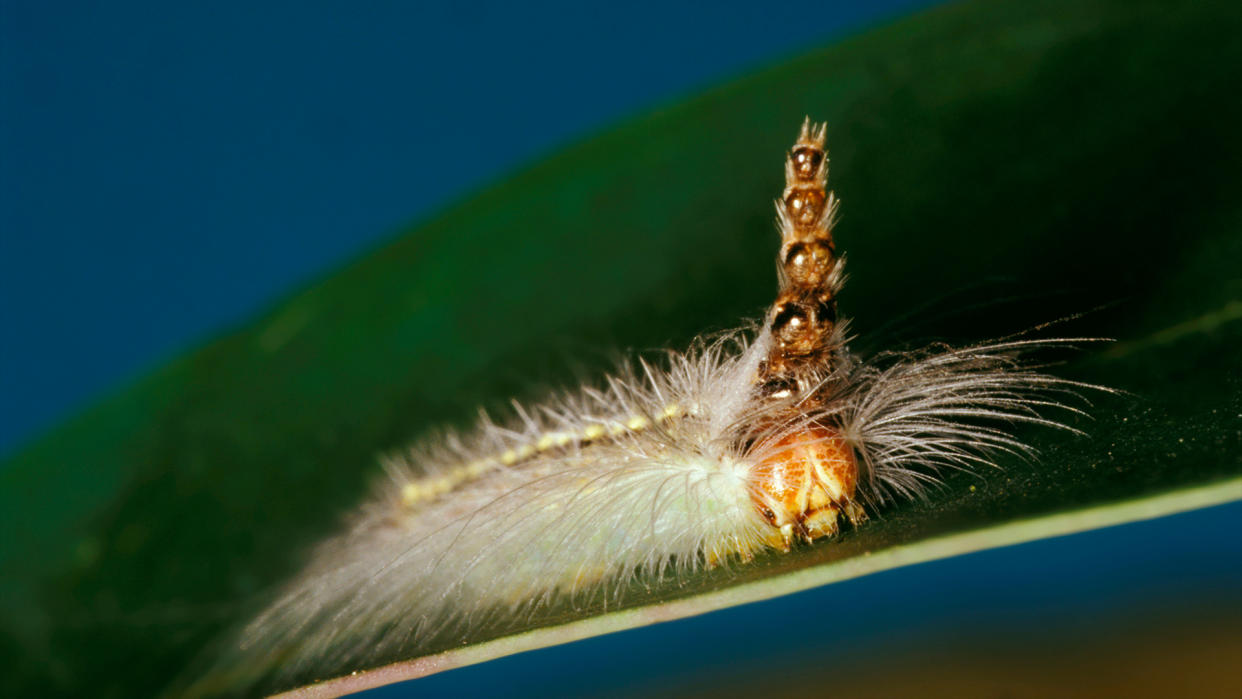Gum leaf skeletonizer: The venomous 'Mad Hatterpillar' that wears its old heads like a crown

Name: Gum leaf Skeletoniser (Uraba lugens)
Where it lives: Australia and New Zealand
What it eats: Eucalyptus leaves
Why it's awesome: The caterpillar of the gum leaf skeletonizer moth is a hairy little creature that keeps its old head capsules and stacks them on its head. This macabre adornment has earned it the nickname of the "Mad Hatterpillar," inspired by the character from "Alice's Adventures in Wonderland."
But why undertake this elaborate millinery? One study published in 2016 investigated this question by holding trials involving the caterpillars and their natural predators — spiders and stink bugs. The researchers found that attacks on larvae with a stack of headcases took more than 10 times longer than attacks on larvae that had had their stack removed. They found that the empty head capsules acted as a false target for predators and could also be used to deflect the piercing rostrum of a predator.
Related: Caterpillars evolved their weird chubby little 'prolegs' from ancient crustaceans
Gum leaf skeletonizers are also covered with hollow venomous spines — or hairs — containing histamines that can cause erucism, or caterpillar dermatitis. If these spines pierce human skin, they cause a stinging sensation, itching and a rash. This venom can remain within the spines even after a caterpillar sheds its skin.
Its common English name is derived from the caterpillar's eating habits. The caterpillars eat eucalyptus leaves gregariously, with multiple individuals on the same leaf. They eat through both the under and upper sides of the leaf but avoid the veins — leaving just the skeletal-looking remains of the munched leaf. The presence of these caterpillars can slow the growth of eucalyptus trees and even kill them.
RELATED STORIES
—Fuzzy caterpillar has sting 'like being hit with a baseball bat," and now we know why
—Wallace's sphinx moth: The long-tongued insect predicted by Darwin decades before it was discovered
—Rarely seen supersized moth with 10-inch wingspan found at Australian school
Endemic to Australia, these caterpillars have also spread to New Zealand where they are considered a pest. To combat them, ecologists released a species of small parasitoid wasp (Cotesia urabae) to act as a biological control agent.
"It was a big project." Toni Withers, senior entomologist at the New Zealand research institute Scion, told Live Science in an email. "New Zealand has no native insects with this stinging hair, and human health was one of the reasons we wanted to avoid outbreaks."

